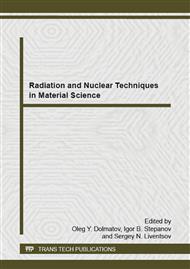p.487
p.492
p.496
p.501
p.506
p.511
p.515
p.519
p.523
Use of 99mTc-HMPAO in Evaluating the Results of Cerebral Hypoperfusion Prevention in the Patients with Coronary Heart Disease after Coronary Artery Bypass Grafting
Abstract:
The purpose of this study is to research the use of the radiopharmaceutical 99mTc-HMPAO in the evaluation of drug prevention of cerebral complications in patients with coronary heart disease after coronary artery bypass grafting (CABG) performed with cardiopulmonary bypass (CPB). The study included 30 patients, in whom surgical revascularization was performed with CPB. 11 patients in this group were prescribed instenon. All the patients underwent brain tomoscintigraphy with 99mTc-HMPAO and neuropsychological testing before CABG and 10-15 days after it. The results showed that 99mTc-HMPAO is useful radiopharmaceutical for evaluation of cerebral complications in patients after CABG. Thus, coronary artery bypass grafting using CPB can be complicated by the deterioration of cerebral perfusion and cognitive dysfunction, while preventive medication with instenon can prevent or significantly reduce the violations of cerebral hemodynamics and neuropsychological status of the patients.
Info:
Periodical:
Pages:
506-510
Citation:
Online since:
January 2015
Price:
Сopyright:
© 2015 Trans Tech Publications Ltd. All Rights Reserved
Share:
Citation:


